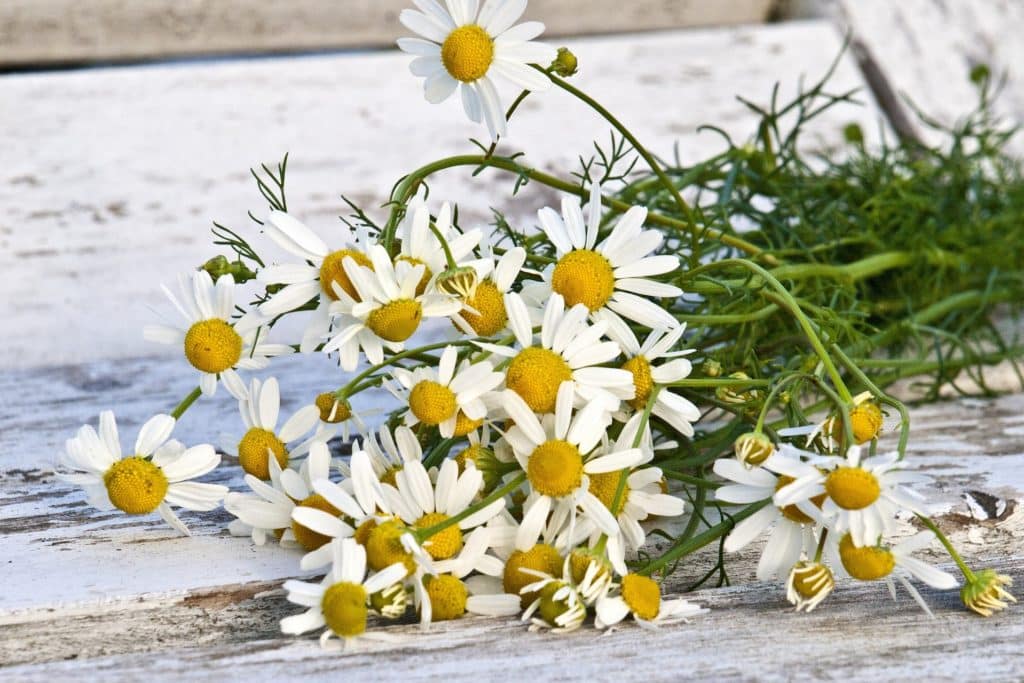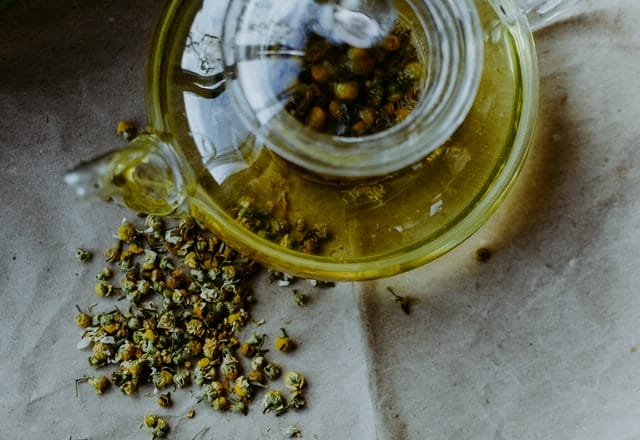What does chamomile tea taste like?
This post may contain affiliate links. Read the full disclosure here
Chamomile is a flowering plant that has been used medicinally [1] for centuries. It is often found in teas, infusions, and essential oils. The flavor of chamomile varies depending on how it is prepared. The flavor of the tea also depends on the age of the plant and how many times it has been harvested.
Chamomile herbal tea has a mild, sweet flavor. Some people describe it as apple-like, fruity, floral, or even like sweet hay. The taste is very different from black or green teas.

How to make chamomile tea taste better
Chamomile is a great herb for many reasons, but it’s often overlooked because it has a fairly bland taste.
Many tea drinkers say lemon juice enhances the taste of chamomile. Honey can also help improve the flavor of strongly flavored teas. However, if you like your tea on the bitter side, you might want to avoid adding sweeteners.
Some people find that chamomile tea tastes bitter, or even like dirty socks. This is completely normal, and it’s not because your tea is bad or your water is bad. It’s just that some people don’t like the taste of chamomile tea. However, there are some things you can do to make your tea taste better.
1) Use fresh chamomile flowers: The fresher your flowers, the better they will taste. You should buy your flowers from a reputable store that sells them in bulk. Don’t buy them in individual bags because they will lose their flavor quickly. Many stores sell bulk herbs and spices for this purpose, so you can use the entire bag at once to make a large batch of tea.
2) Use filtered or distilled water: You should also use pure water when making your tea as well as using fresh flowers. If you don’t have access to bottled water, then at least use filtered tap water or spring water. Filtered tap water or spring water have fewer chemicals than regular tap water, which means they will yield a more fragrant cup of tea.
3) Steep for a longer time: Most people steep their chamomile for only 3–5 minutes, but if you steep it for up to 10 minutes (or even longer), then it will be stronger and more flavorful than if you steeped it for only 3–5 minutes. Steeping for longer also helps extract more of its nutrients into the cup while also extracting more of its bitterness from the flower heads after steeping (which means it will be less bitter in the cup).
What to put in chamomile tea?
Some people do not like the taste of chamomile tea on its own, but there are several different things that you can add to it to make it taste a little better.
Some popular ingredients to add to your chamomile tea to make it taste better are:
- Cinnamon
- Peppermint
- Stevia and soy milk
- Hibiscus
- Lavender or rose
- Jasmine or orchid
- Ginger

Why does my chamomile tea taste terrible?
Some people haven’t had good experiences with chamomile. It seems like there’s a small minority of tea drinkers who can’t stand the flavor or smell!
You can make chamomile tea more palatable by adding fruit juice, orange peel, or lemon peel to the mix. You can also try putting the tea in the fridge for 10-15 minutes before drinking it. This will decrease its bitterness and improve its flavor.
It’s also possible that your brewing method isn’t working. Chamomile has a very subtle flavor, so if the tea tastes too strong or has a bad flavor, try steeping it for a shorter length of time. The water might also be too hot when preparing the tea.
Another alternative would be to buy a seasoned tea. This option from Celestial Seasonings, a well-known company, and there weren’t any reviews that mentioned a bad taste.

If you want to find the best chamomile option, we’ve reviewed the top chamomile teas here

